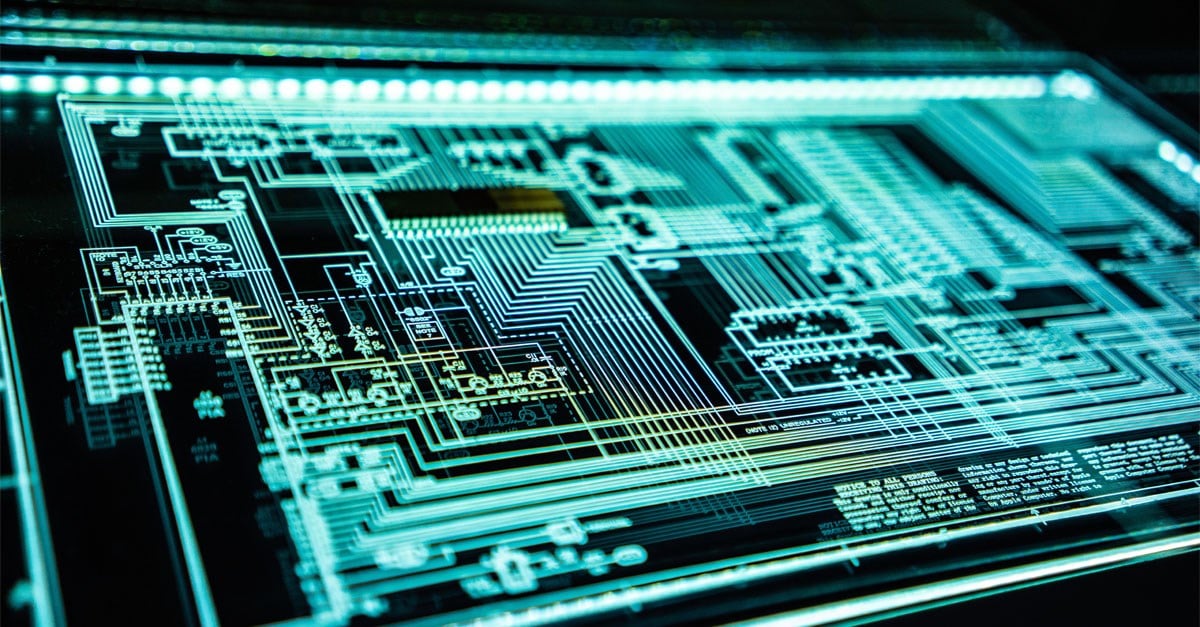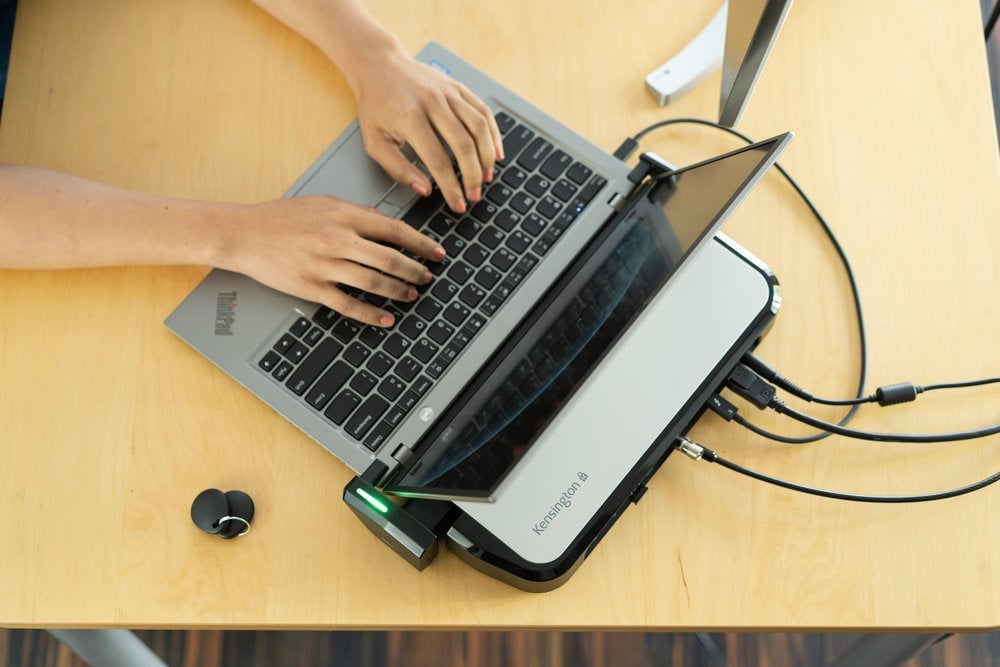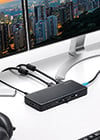
AES Encryption or Advanced Encryption Standard is an important security standard chosen by the U.S. government to protect classified information and is implemented in software and hardware throughout the world.
Using cryptographic keys of 128, 192, and 256 bits, this standard provides end-to-end encryption that ensures data can’t be deciphered even if it’s intercepted. Desktop computers, laptops, tablets, smartphones, and wearables should all support the AES specification.
AES is not just something to protect your data sent through email or the Internet either. There are also wireless devices, such as:
- AES Keyboards
- Earbuds
- Mouse
That use AES encryption to secure every wireless transmission you make.
Even your NFC-chipped credit or debit card requires end-to-end encryption, as does your car’s wireless key FOB. It's the basis for the technology that drives cryptocurrencies.
Without this important security layer, your device – even your network – is vulnerable to ransomware, botnets, and other cyberattacks. Here’s what you need to keep your data safe.
AES Encryption: how does it work?
The AES encryption
It works by assigning both the sender and recipient a key and using those keys to obscure the data from plaintext into what’s known as ciphertext. If the AES-encrypted transmission of this article were intercepted by a third party, instead of reading “Kensington,” they’ll see something more along the lines of “K3h$98fh*!Hskes4.”
The AES algorithm goes through anywhere from 10-14 rounds of conversion to make it extremely time-consuming to break the encryption. We’re not talking about an inconvenient amount of time here. Using brute force to crack the cryptography of a 128-bit AES key would take one billion billion years.
To provide some context, the universe is just under 14 billion years old. To put that in perspective, if 7 billion of the 7.7 billion people in existence each owned 10 computers focused entirely on cracking your encryption, they’d accomplish it in about 77 septillion years.
This makes AES encryption more than enough to protect your data from dinosaurs, aliens, and even threats that won’t exist for another billion years or so.
A World Without AES Encryption
While providing this much security may seem like overkill, the 2019 Official Annual Cybercrime Report from Cybersecurity Ventures and Herjavec Group explains why it’s necessary. For starters, cybercriminals cost the world $3 trillion in 2015 and are projected to double to over $6 trillion by 2021. The report points out cybercrime is more profitable than the total illegal drug trade and represents the single greatest transfer of wealth in history.
It’s happening at a time when more devices than ever are going online, nearly all of them using wireless technologies. Smart devices such as smart speakers, smart TVs, and other IoT devices are installing connected sensors gathering and transferring data at unprecedented rates. In 2015, there were 15.41 billion connected devices, which is estimated to be 30.73 billion in 2020 and 75.44 by 2025, according to Statista.
Without AES encryption, something as simple as your mouse, keyboard, or remote presentation can become a security vulnerability. This is just one of the pressing security issues businesses face, as major tech companies like Microsoft admit that current enterprise password protocols are horribly outdated. Some security researchers believe the need to constantly change passwords is more of a vulnerability than protection.
Encryption, including AES encryption, is one of the key security measures mentioned in the GDPR compliance in input devices just like it already is for many POS devices, municipal workstations, and other technologies (Note, GDPR Article 32 specifically mentions encryption as a type of security measure that companies should consider protecting data). In a world devastated by cyberattacks, AES encryption arms businesses with the tools necessary to stay safe.
Kensington AES Devices
Kensington is committed to providing businesses with powerful solutions to provide security, connectivity, and wellness to the workplace. That’s why we support the AES encryption standard in a wide array of devices, including:
AES-Keyboards
A wireless keyboard needs AES encryption to prevent keystrokes from being intercepted. It doesn’t matter what type of security you have if someone can record your login info at the keyboard level, so we secure our wireless keyboards with AES 128 encryption.[KR3] This is the most important product for AES as any keystrokes can be recorded meaning numeric and alphanumeric data can be recorded to access passwords and login details to anything the user utilizes – from corporate login details for secure sites to personal banking details.

Here are some of the AES Keyboards you can choose from:
- The K72344 Slim Type Wireless Keyboard is a portable and low-priced wireless keyboard that uses 128-bit AES encryption for stable and secure performance up to 33 feet on its 2.4 GHz connection.
- The K75230 Pro Fit® Low Profile Wireless Desktop Set also supports AES with a spill-proof keyboard and an ambidextrous mouse.
AESMice and Presenters
Our wireless mice and presenters support 128-bit AES encryption to provide a secure connection while navigating on-screen. This protects against man-in-the-middle attacks where a malicious third party takes control over your workstation. It’s a great feature for schools, businesses, and governments, along with anyone giving public presentations.

The K72452 Pro Fit® Wireless Mobile Mouse uses AES 128 for its 2.4GHz USB connection so you have full control over its 1000 DPI laser sensor. Stepping up the size, AES is also supported in the Pro Fit® Mid-Size Mouse (also available in a variety of colors) and the K72370 Pro Fit® Full-Size Wireless Mouse.
The K72426 Expert Wireless Presenter uses AES 128 on a 2.4 GHz wireless connection for a secure connection up to 150 feet.
AESLaptop Locking Stations
Our laptop locking stations provide more than physical security – they transform your laptop into a desktop workhorse through high-throughput connections. They also support AES 128 encryption on the NFC key Fobs to protect you against unauthorized attacks.

AES-Encrypted Biometrics
Kensington biometrics are heralded as the next generation of data security, converting a user’s fingerprint into a 256-bit AES encryption key. This is used to secure devices and accounts in place of a standard password, which is easily cracked.
Our K67977 VeriMark™ USB Fingerprint Key Reader supports FIDO U2F, anti-spoofing and Windows Hello so you can implement AES 256 into your workstation, or for each workstation within your business. K64704 VeriMark™ IT Fingerprint Key supports AES 256, FIDO2/WebAuthn, and Windows Hello for Business. VeriMark™ IT was designed to provide IT administrators an easy solution to implement passwordless ecosystems c/o Windows Hello for Business, while also supporting Windows-based services like Azure, Active Directory, Office 365, Skype, OneDrive, and Outlook.
AES Encryption for Life
AES encryption is a fundamental part of any data security plan, whether business or personal. Using uncrackable algorithms, these security standards hide your unencrypted data behind a series of complicated transformations into what’s known as ciphertext. It would take longer than the world has existed to crack this cipher using a brute force attack.
Cybercrime is on the rise, and hackers always look for easy vulnerabilities and weak points to exploit. You can have a secure network that’s compromised by using unsecured input devices. If an attacker can monitor your keyboard, mouse, presenter, biometrics, etc., then they can act like you and wreak havoc on your digital life.
Kensington is committed to providing the most secure products on the market. Visit our Data Protection Products to see all the options we can offer to protect your technology, both physically and digitally.
